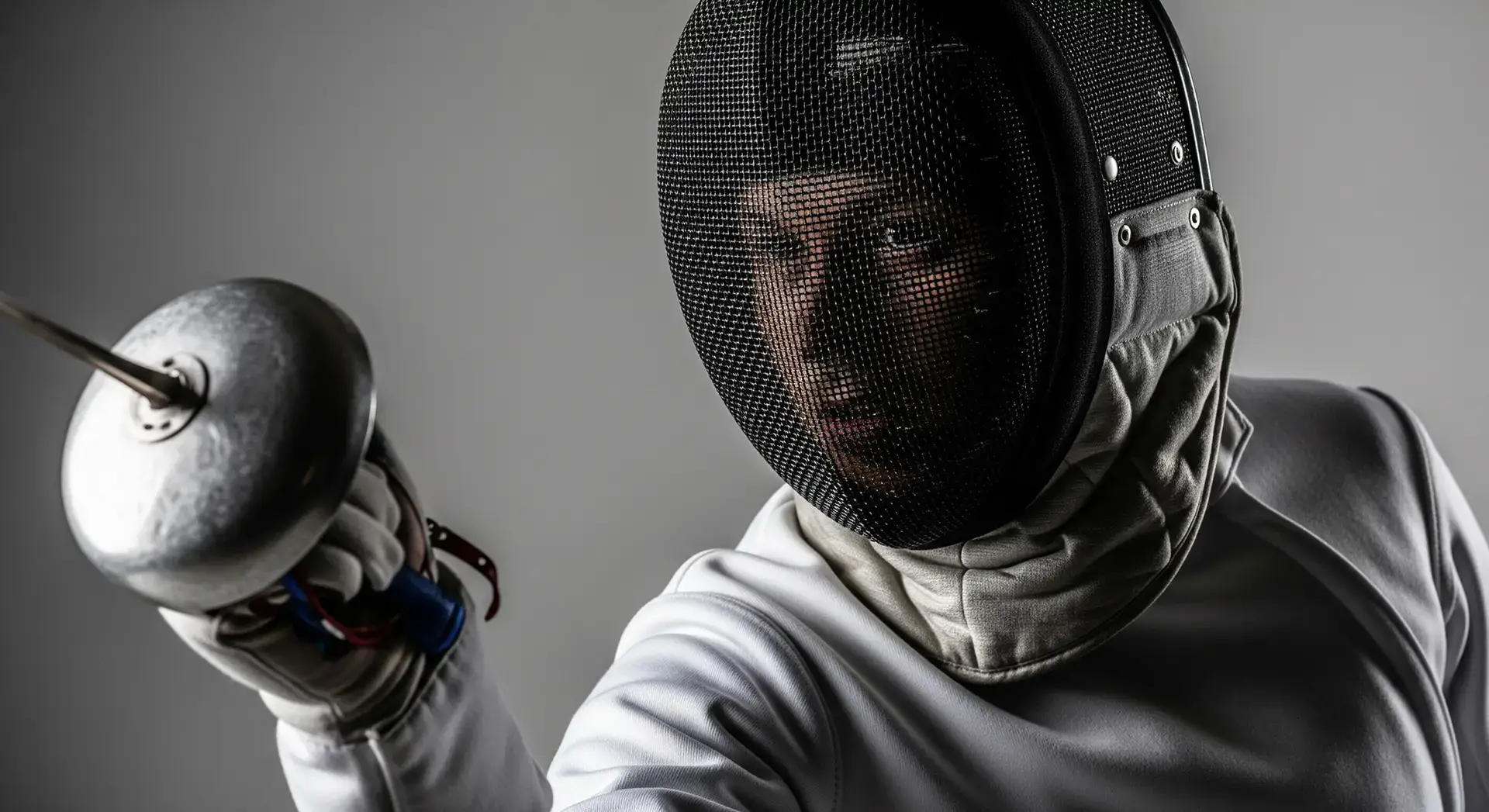Fencing is more than swordplay — it's a dance of minds and bodies
OLLIMONO Magazine | 13th June 2025
Fencing blends athleticism, strategy, and finesse. But what kind of sport fencing really is? Think lightning-quick footwork, split‑second feints, and razor‑sharp concentration — all under the hum of electric scoring systems. But beyond its modern veneer, fencing is a centuries‑old practice with roots in honor and skill .

It all started with rapiers and duels
By the late 15th century, civilians carried rapiers, not for sport, but to settle matters of honor. Over time, the heavy dueling rapier gave way to lighter blades. By the mid‑17th century, instructors introduced the foil — a flexible training weapon, and later, the protective mask in the 18th century made practice safer. Domenico Angelo, in 1763, was a key figure. He reframed fencing as a way “to develop health, poise, and grace,” paving the way for its modern sport form.
Three weapons, three very different vibes
Foil
The classic starter weapon: light (~350g), tip‑only scoring, torso‑only target. It emphasizes precision and “right of way” — an etiquette‑based rule awarding points to the fencer who started the true attack.
Épée
Heavier, whole‑body target, and no right‑of‑way rules — first to land wins, and double‑hits are allowed. Consider it the most straightforward format — like tug‑of‑war with swords.
Sabre
Fast, aggressive, and thrilling. You score with edge or tip on everything above the waist. Electric scoring came in 1988; since then, it’s evolved into rapid exchanges and intense footwork .
Electronic blips, not bruises
Modern fencing uses electric scoring: weapons connect via a cord to a box that lights up on contact . The gear — Kevlar jackets, steel‑mesh masks, must meet strict standards. In fact, a study found fencing safer than football, soccer, or basketball.

Olympics? Been there since the start
Foil and sabre were Olympic staples when the Games relaunched in 1896; épée followed in 1900. Italian legend Nedo Nadi remains the only person to win gold in all three weapons at a single Olympics — five golds in 1920 alone, 22 in total.
“Top Fencers to Keep an Eye On”
- Lee Kiefer (Foil, USA) – Gold medalist in individual and team women’s foil at both Tokyo 2020 and Paris 2024 — the first American woman to win individual Olympic foil gold.
- Lauren Scruggs (Foil, USA) – First Black American woman to win an individual Olympic fencing medal — silver in individual foil, Paris 2024. Also part of U.S. team foil that took team gold in Paris 2024.
- Daniele Garozzo (Foil, Italy) – Olympic individual foil champion in Rio 2016, silver in Tokyo 2020.
- Tommaso Marini (Foil, Italy) – Paris 2024 Olympic medalist, 2022 team European champ, 2022 team world champ, and 2023 individual world champion in men’s foil.
- Alexander Tofalides (Foil, Cyprus) – First-ever Cypriot fencer to qualify for the Olympics (Paris 2024).
You don’t need a black belt to enjoy it
Fencing isn’t just for elites — it’s accessible and rewarding:
- Physical perks: agility, explosive speed, muscle tone
- Mental gains: strategy, nerve‑center control, split‑second decisions, “it’s a mental chess match fought at lightning speed” (A.Tofalides)
Social vibes: camaraderie, respect, shared rituals (ever heard them salute?)
Starting Out: What You Need
- Find a club or school: local salles offer intro classes.
- Gear: starter kit often includes mask, jacket, glove, and weapon — clubs usually rent these.
First class: expect basic footwork (“en garde,” advances, retreats), bladework (parry, lunge), and simple drills with an instructor or partner.
It’s a community with heart
Fencers may duel on piste, but they bond off it, sharing tips, traditions, and that signature salute before and after bouts. Coaches, teammates, even rivals respect the shared journey. It’s as much about connection as competition.
Why it matters
Fencing brings together centuries of tradition and modern athletic flair. It sharpens the body and mind, fosters confidence, and builds community, all while offering a sport that rewards discipline, clarity, and adaptability.
Whether you’re chasing Olympic gold or just looking to move with more purpose, fencing teaches you something rare: how to act precisely, think fast, and recover faster.
In a world that often rewards speed without control, fencing is a quiet rebellion—where focus beats force and every move counts. And in that, it’s not just a sport — it’s a high-performance practice.